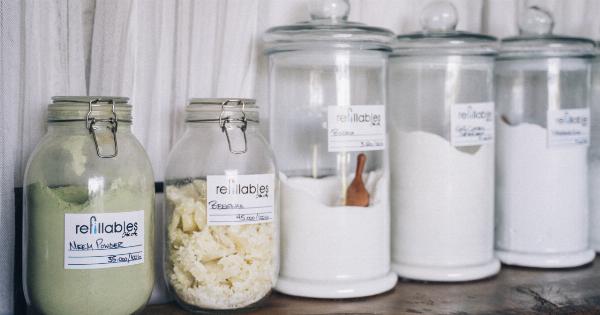Many people turn to caffeine to help them stay awake and alert throughout the day. Whether it’s through a cup of coffee, a shot of espresso, or an energy drink, caffeine has become a staple for those in need of a boost.
But did you know that consuming caffeine right before a lunchtime nap can actually enhance its effects? In this article, we will explore the importance of caffeine before a midday sleep and how it can improve and rejuvenate your energy levels.
1. Understanding the Science behind Caffeine
Caffeine is a natural stimulant that affects the central nervous system. When consumed, it blocks adenosine receptors in the brain, which in turn inhibits the onset of drowsiness and promotes alertness.
Adenosine is a neurotransmitter that signals to the brain when it’s time to sleep. By blocking these receptors, caffeine prevents drowsiness. However, the effects of caffeine can wear off over time, which is where a power nap comes into play.
2. Maximizing the Benefits of a Midday Sleep
A nap taken during the day can provide numerous benefits, such as improved mood, increased alertness, enhanced creativity, and better memory retention. Research has shown that a nap of 20-30 minutes can boost cognitive function and productivity.
By incorporating caffeine into this equation, you can amplify the positive outcomes of your nap and experience an even greater rejuvenation.
3. Combining Caffeine and a Nap
The idea of taking a nap soon after consuming caffeine might seem counterintuitive.
After all, caffeine is known for its ability to keep us awake, right? However, the concept of a caffeine nap, also known as a coffee nap, has gained popularity due to its effectiveness.
4. How It Works
The process goes like this:.
1. Consume a caffeinated beverage: Drink a cup of coffee or any other beverage containing caffeine. Be mindful of the caffeine dosage, as too much can lead to jitters and restlessness.
2. Set an alarm: It’s crucial to determine the ideal duration for your nap and set an alarm accordingly. Ideally, a power nap ranges from 20-30 minutes to avoid entering deep sleep and experiencing grogginess upon waking.
3. Nap time: Immediately after consuming your caffeine, take your power nap. Settle in a comfortable position and make sure you’re in a quiet and distraction-free environment.
The science behind this concept lies in the timing. As mentioned earlier, caffeine takes time to kick in and suppress the sleep-inducing effects of adenosine.
By using this interim period for a quick nap, you can benefit from both the effects of the caffeine and the rejuvenating power of sleep.
5. The Benefits of a Caffeine Nap
A caffeine nap can provide several advantages, including:.
– Increased alertness: By combining caffeine and a nap, you’ll wake up feeling more refreshed and focused.
– Improved cognitive function: The combination of caffeine and a nap enhances memory, attention, and problem-solving abilities.
– Boosted mood: Power napping can reduce stress and improve overall mood, while caffeine increases feelings of happiness and well-being.
– Enhanced physical performance: Caffeine has been found to improve physical stamina and endurance during exercise.
– Increased productivity: The heightened alertness and cognitive function obtained from a caffeine nap can lead to greater productivity and efficiency in tasks.
6. The Ideal Caffeine Intake
When considering a caffeine nap, it’s essential to be mindful of your caffeine intake. The recommended daily limit for caffeine consumption is around 400 milligrams, which is equivalent to about four cups of coffee.
It’s important to note that individual tolerances to caffeine may vary. Therefore, finding the right dosage that works for you is key to reaping the benefits of a caffeine nap.
7. Timing is Key
Timing plays a significant role in the success of a caffeine nap. It’s important to consume caffeine at the right moment to ensure its effects align with your nap. Experts suggest drinking a cup of coffee about 15-20 minutes before your planned nap.
This timeframe allows the caffeine to start taking effect just as you settle down to sleep, maximizing its benefits when you wake up.
8. Potential Drawbacks
While caffeine naps offer many advantages, there are some potential drawbacks to consider:.
– Difficulty falling asleep: If you struggle with falling asleep, a caffeine nap might not be the best option for you. Experiment with shorter napping periods or alternative methods to recharge.
– Disrupted nighttime sleep: Consuming caffeine too close to bedtime can interfere with nighttime sleep, leading to insomnia or disrupted sleep patterns.
It’s crucial to be aware of your caffeine consumption’s timing and ensure it doesn’t negatively impact your regular nighttime rest.
9. Alternatives to a Caffeine Nap
If a caffeine nap isn’t suitable for your preferences or lifestyle, there are alternative ways to boost energy and productivity throughout the day without interfering with your sleep patterns. Some alternatives include:.
– Taking a brisk walk: Engaging in physical activity can help increase blood flow and oxygen levels, leading to improved alertness and wakefulness.
– Practicing mindfulness or meditation: These practices can provide mental clarity and relaxation, reducing stress and enhancing focus.
– Eating foods that provide sustained energy: Opt for a balanced diet that includes whole grains, lean proteins, and fruits and vegetables. These foods provide essential nutrients and help sustain energy levels throughout the day.
– Staying hydrated: Dehydration can cause fatigue, so it’s important to drink enough water to maintain good overall well-being and energy levels.
10. Conclusion
A caffeine nap, when used appropriately, can be a powerful tool in maintaining productivity and boosting energy levels.
By combining the effects of caffeine and a quick power nap, individuals can experience increased alertness, improved cognitive function, and an overall enhanced mood. However, it’s essential to be mindful of individual caffeine tolerances and to time consumption correctly to avoid interfering with nighttime sleep.
Whether you choose a caffeine nap or alternative means of revitalizing, finding what works best for you is crucial in achieving optimal levels of wakefulness and alertness throughout the day.






























